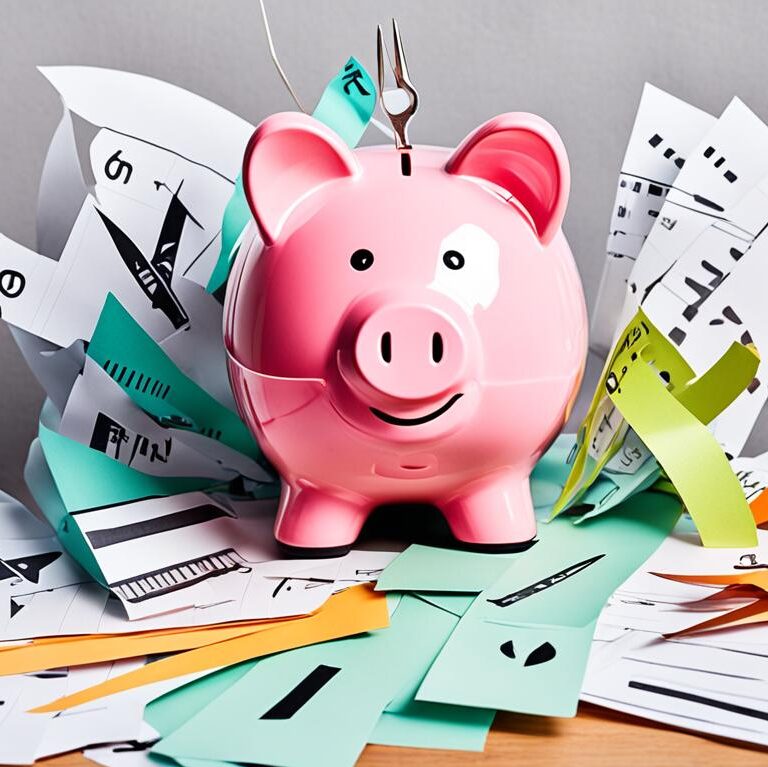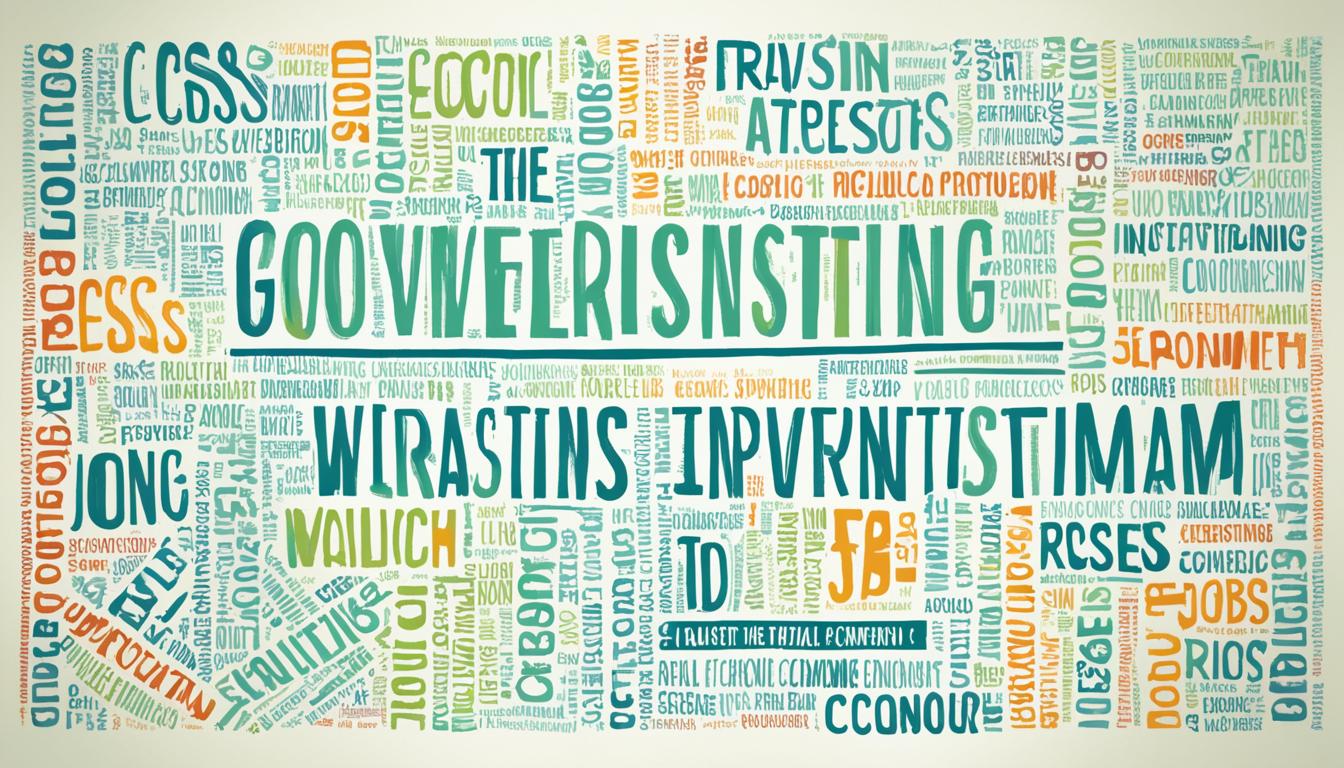“As an Amazon Associate I earn from qualifying purchases.”
Every seven months since the end of World War II, the U.S. has faced a recession1. During these times, the government’s fiscal policies play a key role in chasing stability and growth. Such policies are not just backup plans but are active steps to wake the economy up and put it back on the growth path. With less spending by people and businesses pulling back on investments, these strategies bring life to a slowing economy. They encourage growth, even when markets are tough1.
Economies naturally grow and shrink because of things like financial crisis and policy changes. This results in lost jobs, wasted resources, and decreased income1. Yet, the government’s fiscal policies act as a strong defense. They introduce growth-driven measures that boost the use of resources and improve economic indicators, even when interest rates are very low1. Building on proven methods and using policies based on actual data can make our economy stronger. It helps it recover faster from the recession’s effects, making it more resilient1.
Key Takeaways of Growth Strategy During a Recession
- Recognize the significant impact of fiscal policies in mitigating economic recessions.
- Grasp the importance of economic stimulus efforts to counter reduced consumer spending and investment.
- Understand how expansionary fiscal policies can bolster output and enhance resource utilization.
- Learn the value of incorporating evidence-based automatic triggers to ensure a timely and temporary economic boost.
- Explore the potential of well-crafted policies to transform automatic stabilizers and encourage growth.
Understanding the Role of Fiscal Policy During Economic Downturns
When a nation faces a downturn, fiscal policy plays a key role. It uses tools like taxes and government spending to fight a recession’s effects. These actions boost demand for goods and services, which keeps jobs and stimulates the economy.
Impact of Fiscal Policy on Aggregate Demand and Employment
The U.S. has seen fiscal policy manage the economy during recessions since World War II1. Things like unemployment benefits help soften the blow of downturns. They stabilize the economy by supporting people’s spending power1.
Increased spending on benefits like unemployment and SNAP happens when more people lose jobs or earn less. This support boosts demand during tough times1.
Keynesian Approach to Government Spending in Recessions
Keynesian economics suggests spending more and taxing less during recessions. This boosts demand and helps the economy. Data from the 2008-09 recession shows a push for public consumption following this approach2.
Investing in infrastructure has proven to be very effective. It supports the Keynesian view that active government spending is crucial in downturns2.
Comparing Fiscal and Monetary Policies in Recession Management
Fiscal and monetary policies tackle recessions differently. Fiscal policy deals with spending patterns, while the Federal Reserve controls monetary policy. The latter adjusts interest rates and money supply to foster growth and keep prices stable.
Recently, to fight inflation, the Federal Funds rate was raised to its highest since 2008. This shows how monetary policy works alongside fiscal efforts to stabilize the economy3. Understanding these strategies helps us see how governments guide the economy towards recovery.
| Policy Type | Tool | Economic Effect | Example |
|---|---|---|---|
| Fiscal | Tax cuts, Government Spending | Increase in Aggregate Demand | Expansionary tax policies, Infrastructure projects |
| Monetary | Interest Rates, Money Supply | Inflation control, Spending and Saving rates | Recent increase in Federal Funds rate3 |
Understanding these economic tools shows how government strategies impact our economic future. They pave the way for recovery and fiscal health.
The Efficacy of Automatic Stabilizers in Softening Recession Impacts
Understanding the landscape of federal spending includes knowing about automatic stabilizers. These mechanisms help lessen the negative effects of economic downturns. They act as a kind of economic boost without needing a new law, starting up as the economy demands.
Remember when the economy last struggled? You likely saw unemployment rise. This was matched by a rise in unemployment benefits, sustaining consumer spending. This shows how automatic stabilizers work within the economy, adapting and intervening when needed.

As job losses went up during tough economic times, government relief efforts also increased. The CARES Act of 2020 gave over $2 trillion in relief4. In 2009, the American Reinvestment and Recovery Act gave $831 billion for subsidies, tax breaks, and infrastructure4.
But automatic stabilizers do more than respond to crises. They adjust taxes and payments to help balance the economy over time4. These changes aim to keep incomes and spending stable, playing a critical role during hard economic times4.
To see how these stabilizers affect the budget, we look at data. The Congressional Budget Office found they have a big impact over time, affecting revenues significantly5. They’ve also helped maintain the economy’s health from 1965 to 20165.
Automatic stabilizers can be a stronger stimulus than one-time spending. Their effects were key during the Great Recession, boosting the economy significantly5. Programs like SNAP and UI are efficient in stimulating the economy, especially in helping lower-income households5.
However, state and local efforts can be limited by the need to balance budgets. This can lead to cuts or higher taxes, which might weaken the effectiveness of automatic stabilizers5. Overcoming these challenges requires ongoing tweaks to policy, so these tools can help the economy through ups and downs.
During a recession, what is one way governments try to encourage growth?
When a recession threatens, governments use many strategies to kickstart growth. They focus on boosting consumer spending, a key to economic health. These methods quickly support the economy and set the stage for recovery.
Federal Direct Payments to Stimulate Consumer Spending
In a sluggish economy, direct payments are crucial. They can be tax cuts or stimulus checks, boosting spending. After the 2009 recession, the American Recovery and Reinvestment Act used $800 billion to energize the economy6.
State-Level Responses: Adjusting Federal Medical Assistance Percentage
States respond by changing the Federal Medical Assistance Percentage (FMAP). This increases Medicaid’s federal funding. It helps states keep health services running without major cuts. This move keeps health services going and helps prevent more economic slumps.
Enhancing Unemployment Benefits and SNAP Programs
Improved unemployment benefits are crucial in a recession. They provide longer support for those out of work. This support helps keep consumer demand stable. For instance, in 2023, job growth averaged 232,000 a month. About 14.1 million jobs were added under the current administration7.
The SNAP program also gets a boost, helping families in need. This helps maintain their buying power. Both actions drive the economy, lessening recession impacts. Efforts like federal payments, aid adjustments, and program enhancements show a dedication to economic health. They rely on strong individual spending and overall support systems.
Investing in Infrastructure Projects to Bolster Economic Activity
Your government keeps focusing on growth by funding big infrastructure projects. These projects help to boost the economy and create jobs. For instance, improving programs like SNAP and TANF benefits everyone. It helps those in need and increases buying power1.

Fiscal policies work best with strong federal support. Federal taxes help stabilize the economy during downturns1. Also, changing programs like the BUILD initiative quickly gets money to important projects, helping even when the economy slows1.
Creating flexible spending rules for infrastructure helps automate transportation funding. This reduces the impact of economic downturns, leading to a more stable economy1.
The 117th Congress put $1.25 trillion into various sectors for big changes in the next ten years8. This includes $276 billion for the energy sector through tax credits. There’s also a big focus on the environment and reducing greenhouse gases8.
Most of the government’s infrastructure budget goes to formula programs, with 92% given out in the first year. State leaders decide where this money goes. This shows how important good government plans are for improving our infrastructure8.
Rising costs in building materials make managing funds wisely more important than ever8. This affects the cost of projects and borrowing money.
Your vision to invest in infrastructure is a key part of recovery and stability. With careful planning, these investments can deeply improve the U.S. economy. They promise a future of resilience, creativity, and growth.
Conclusion: Crafting a Balanced Approach for Economic Recovery
Fostering economic recovery is complex. It needs a strategic, multi-dimensional fiscal approach. By addressing both the immediate needs of individuals and broader infrastructural requirements, we can build a support system for growth in a fragile economy.
Strategic government intervention is crucial. Direct payments help by giving money to those who need it quickly. This boosts consumer confidence and spending. Automatic stabilizers are key for delivering immediate relief without the delays of emergency sessions.
It’s important to realize that not all solutions work for everyone. Tweaking programs like the Temporary Assistance for Needy Families (TANF) and the Supplemental Nutrition Assistance Program (SNAP) can make them stronger economic supports during tough times.
| Strategic Intervention | Objectives | Expected Outcomes |
|---|---|---|
| Direct Payments and Benefits Enhancement | Boost household purchasing power | Increased consumer spending, reduction in immediate economic hardship |
| Infrastructure Investment | Stimulate job creation and long-term productivity | Employment growth, enhanced economic infrastructure |
| Automatic Stabilizers (like UI) | Provide rapid-response assistance | Stabilized household incomes, maintained consumer demand |
Using strategic government intervention smartly can tackle immediate economic issues and support future resilience. As we recover, balancing and diversifying these policies will be vital for long-term success.
The Future of Fiscal Strategies in Economic Downturns
Understanding the American economy shows us the need for active government roles against economic lows. History reveals that since World War II, the U.S. has seen recessions about one out of seven months9. This fact stresses the urgency for solid fiscal strategies. Taxes have helped stabilize the economy during such times, softening the blow for homes and businesses9. Looking ahead, we must improve these stabilizers. This involves using lessons from previous downturns to enhance tools like tax policies, unemployment insurance, and SNAP, crucial supports in hard times9.
We must also learn from past monetary policy actions in crises. The Federal Reserve’s moves during the COVID-19 pandemic are prime examples. They cut the fed funds rate by 1.5 points and used forward guidance on rates10. These steps aimed to boost spending and employment during tough times. Also, the Fed’s plan to reduce bond buys by December 2021 and efforts to help credit markets show a proactive economic support philosophy10. These monetary policy tactics serve as key models for fiscal strategies, showing the need for agile, proactive measures in future crises.
As you look forward, consider the ups and downs of U.S. federal spending and the push for more counteracting discretionary policies9. Reflecting on the past while aiming for the future can enrich your fiscal strategies. It’s about taking charge and designing policies that both shield and boost our economy. As you prepare for possible economic downturns, focus on the power of strategic, data-driven actions. They are vital in ensuring overall well-being for communities, industries, and markets.
FAQ
How do fiscal policies encourage growth during a recession?
What is the Keynesian approach to government spending in recessions?
How do fiscal and monetary policies differ in managing a recession?
What role do automatic stabilizers play during economic downturns?
During a recession, what is one government strategy to drive economic growth?
How do adjustments to the Federal Medical Assistance Percentage affect state-level responses during a recession?
Why are unemployment benefits and SNAP programs important during a recession?
Why are infrastructure projects important during economic downturns?
How can governments craft a balanced approach for economic recovery?
What is the future of fiscal strategies in managing economic downturns?
Source Links
- https://www.brookings.edu/articles/recession-ready-fiscal-policies-to-stabilize-the-american-economy/
- https://www.frbsf.org/research-and-insights/publications/economic-letter/2021/02/can-government-spending-help-to-escape-recessions
- https://www.pgpf.org/blog/2023/03/how-can-fiscal-policy-help-reduce-inflation
- https://www.investopedia.com/terms/a/automaticstabilizer.asp
- https://www.brookings.edu/articles/what-are-automatic-stabilizers/
- https://www.gao.gov/blog/gao-100-our-role-during-times-national-crisis-great-depression,-great-recession,-and-coronavirus-pandemic
- https://www.whitehouse.gov/cea/written-materials/2023/12/19/ten-charts-that-explain-the-u-s-economy-in-2023/
- https://www.brookings.edu/articles/the-start-of-americas-infrastructure-decade-how-macroeconomic-factors-may-shape-local-strategies/
- https://www.hamiltonproject.org/publication/policy-book/recession-ready-fiscal-policies-to-stabilize-the-american-economy/
- https://www.brookings.edu/articles/fed-response-to-covid19/
“As an Amazon Associate I earn from qualifying purchases.”

